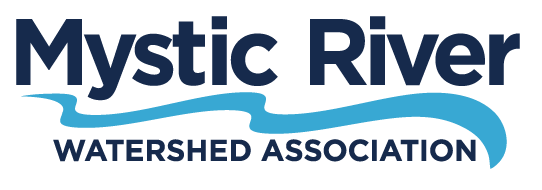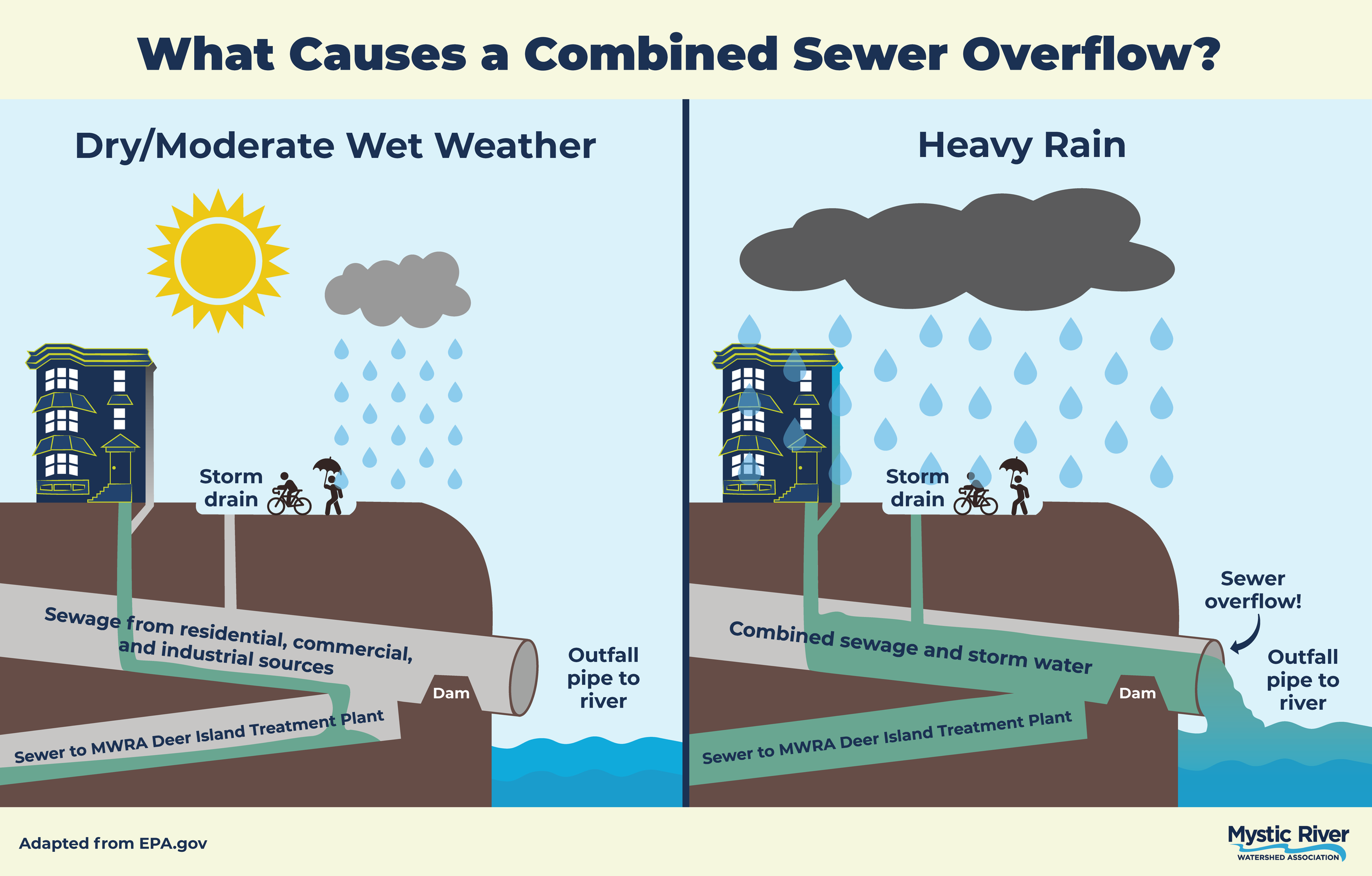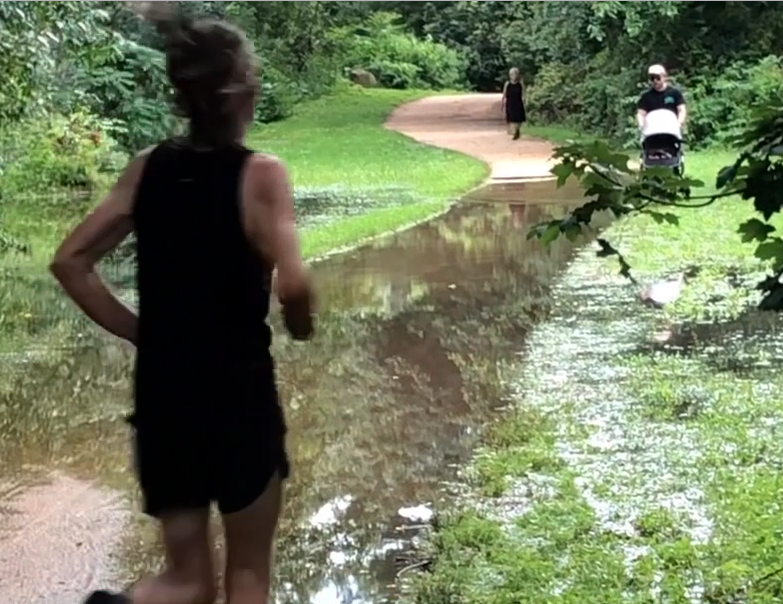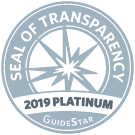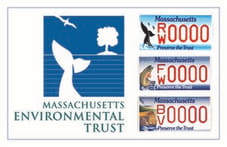On Thursday, September 25th, the Massachusetts Water Resources Authority (MWRA) and the Cities of Cambridge and Somerville will hold the next in a series of public meetings to report on progress in their plan to manage Combined Sewer Overflows in the Mystic and Charles Rivers and the Alewife Brook. With many solutions on the table, planners are considering an important question: How ambitious should we be toward ending sewage pollution in greater Boston?
MyRWA’s answer: Now is the time to be bold! Residents deserve waterways free of sewage pollution and safe for public health, and we must pursue aggressive Combined Sewer Overflow controls to prepare our cities for the climate of the future.
You can support us in advocating for strict controls on CSOs in the Mystic by:
Showing up to the public meeting on September 25th at 6:00 PM via Zoom
There is power in numbers! If MWRA, Cambridge, and Somerville know that residents care, they are more likely to push for stronger measures
Keeping an eye out for City Council meetings about CSOs in Cambridge and Somerville before December
MyRWA is presenting today, September 9th at 2pm, at a Cambridge City Council hearing, but there will be other opportunities in the future
Any plans that the cities make to address CSOs must be approved by the city councils
The deadline for MWRA, Cambridge, and Somerville to present a plan to the US Environmental Protection Agency (EPA) and to the Massachusetts Department of Environmental Protection (Mass DEP) is December of this year. Public support for CSO controls now could make the difference between an ineffective plan that allows CSOs in greater Boston indefinitely and a plan that truly prepares our city for our climate future.
COMBINED SEWER OVERFLOWS
Combined sewer overflows are intentional releases of a mix of sewage and rain (or “stormwater”) into rivers and streams. They are the result of outdated pipe systems in some neighborhoods where sewage flows through the same pipes as the rain. When it rains heavily, the amount of liquid is more than the pipes can handle, so they are designed to overflow, sending both the stormwater and the sewage into rivers and streams rather than backing up into people’s homes. These “combined sewer overflows” pose a risk to the health of both the people and the ecosystem downstream.
CSOs are particularly concentrated in a smaller stream that flows into the Mystic River: the Alewife Brook. They are a public health risk and represent an environmental justice tragedy, disproportionately affecting low-income, minority, and linguistically isolated communities in Massachusetts. If you’re interested in learning more about CSOs and the process underway to control them, you can reference our webpage about CSOs.
WHERE ARE WE NOW?
In recent meetings, we have learned more details about the projects under consideration. There are many options at play, but the most important decision point right now is what level of control we want to achieve. At the meeting on the 25th, you will hear terms like “typical year” and “5-year storm” to describe potential future scenarios. Put simply, CSOs are related to the intensity of weather conditions, and planners are asking – should we hold back and build for average conditions, or be ambitious and prepare for increasingly intense weather?
We shouldn’t have to live in a city with sewage-polluted waterways under any conditions, and we have a once-in-a-generation opportunity now to set things right. This is our chance to tell the cities and the MWRA that it’s time to finish the job and to demonstrate that the public supports making the investments needed to get there.
You can learn more about the CSO Long Term Control Plan and how we got here by reading our blog post - We Are in a Critical Moment for CSOs in Greater Boston - Here’s What You Need To Know.
A resident pushes a stroller through sewage-laden water from Alewife Brook. Photo courtesy of Save the Alewife Brook
